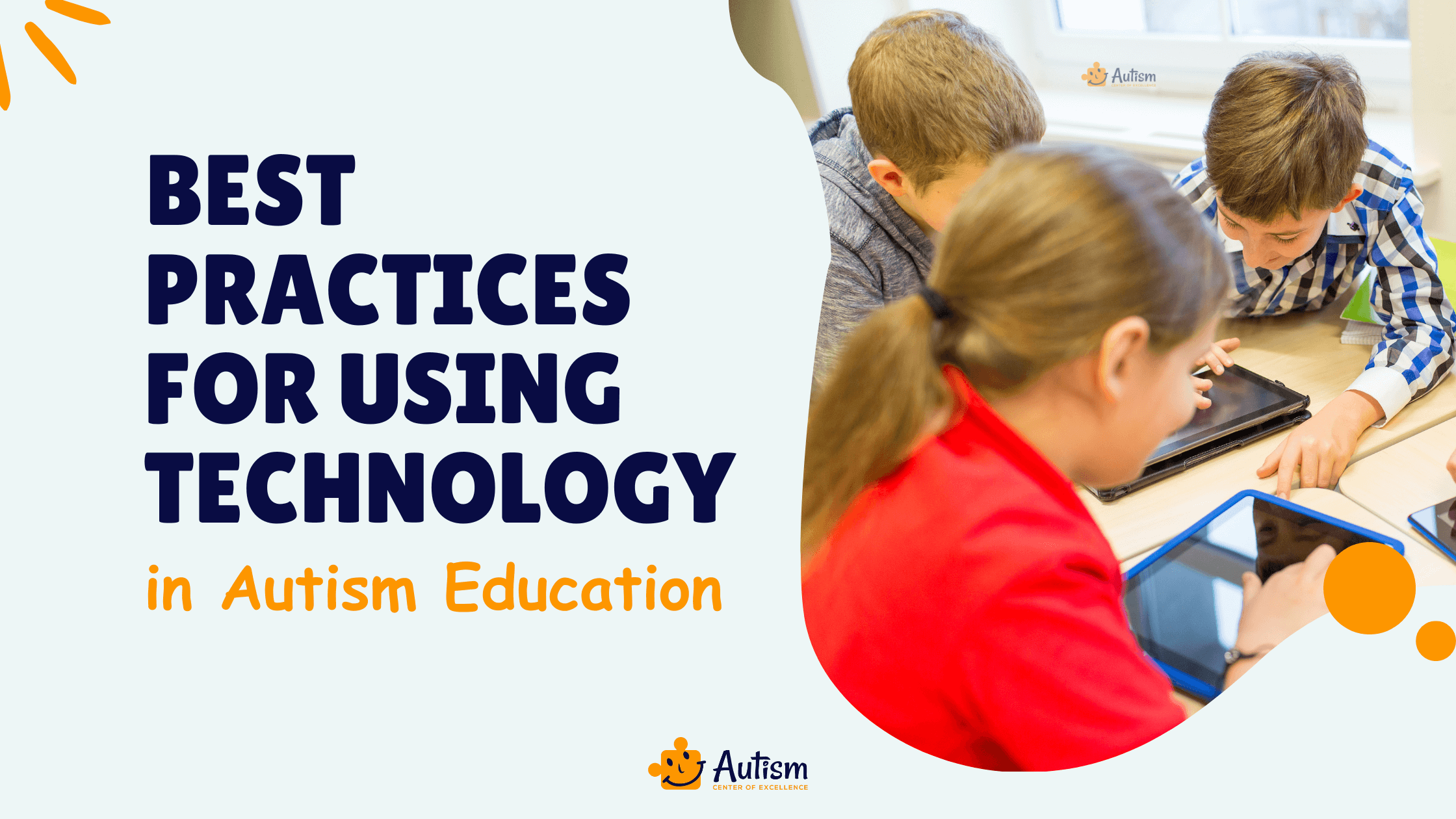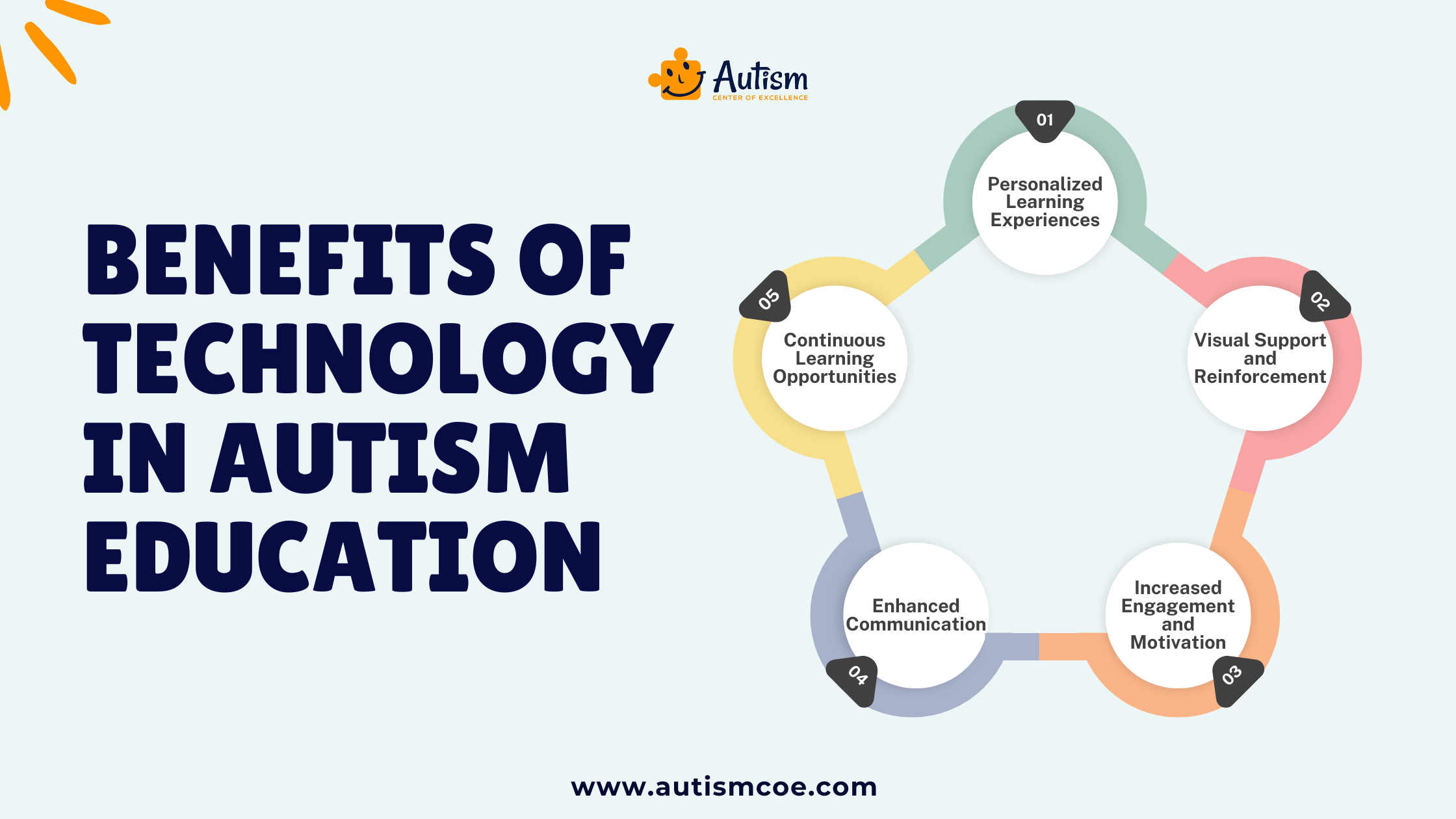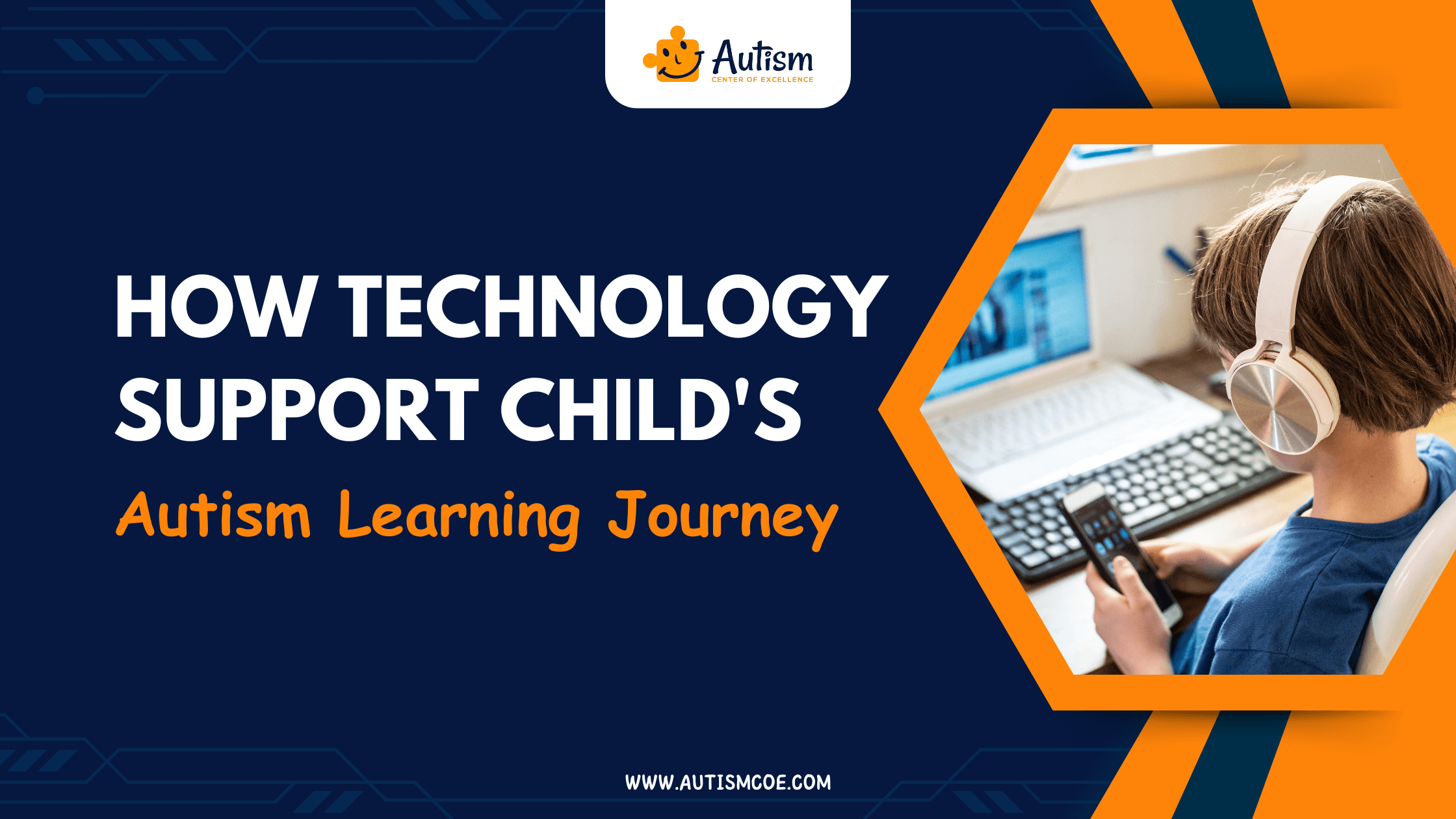Autism Spectrum Disorder (ASD) presents unique challenges for children in various aspects of their lives, including education. However, with the advancement of technology, there has been a significant shift in how we can support and enhance the learning journey of children with autism. For children with autism, traditional educational methods may not always cater to their specific needs. This is where technology steps in as a game-changer, offering personalized solutions that adapt to the individual requirements of each child. In this blog, we delve into the impactful role that technology plays in empowering these children to thrive academically, socially, and emotionally.
The Role of Technology in Autism Education
Technology has revolutionized the way we approach Autism Education, offering innovative tools and resources specifically designed to support the unique learning needs of children with autism. From educational apps and games to specialized devices, technology plays a crucial role in enhancing the learning journey of children on the autism spectrum.
Educational Apps:
One of the most prominent ways technology supports Autism education is through a wide range of educational apps. These apps are carefully crafted to cater to various learning objectives, such as improving communication skills, enhancing social interaction, and promoting cognitive development. For example, there are apps that use visual supports and interactive features to help children with Autism learn new concepts and skills in a fun and engaging way.
Games and Interactive Software:
Another aspect of technology that benefits children with autism is the availability of games and interactive software programs. These tools provide opportunities for children to practice important skills such as turn-taking, problem-solving, and emotional regulation in a virtual environment. By incorporating elements of gamification and interactivity, these programs make learning enjoyable and motivating for children with autism.
Virtual Reality (VR) and Augmented Reality (AR):
Virtual reality (VR) and augmented reality (AR) technologies are emerging as innovative tools in Autism education, providing immersive learning experiences. VR applications can simulate real-life scenarios in a controlled environment, offering safe spaces for children with autism to develop social and life skills. AR apps, on the other hand, overlay digital information onto the real world, creating interactive learning experiences that can captivate and motivate learners with autism.
Specialized Devices:
In addition to apps and software, specialized devices have also been developed to support the unique needs of children with autism. These devices include communication aids, sensory tools, and wearable technology designed to enhance communication, manage sensory challenges, and promote independence. For example, communication devices such as tablets with augmentative and alternative communication (AAC) software enable nonverbal individuals to express themselves effectively and participate more fully in social interactions.
Overall, technology offers a wealth of resources and tools that are tailored to the specific learning styles and needs of children with autism. By leveraging these technological innovations, parents, educators, and therapists can create personalized learning experiences that empower children with autism to reach their full potential.

Best Practices for Using Technology in Autism Education
In today’s digital age, technology has become an invaluable tool for supporting the learning journey of children with autism. From educational apps to specialized devices, there are numerous ways technology can aid in the development of important skills and behaviors. However, to maximize the benefits of technology in autism education, it’s essential for parents, educators, and caregivers to follow best practices when selecting and using these tools.
Assess the Individual’s Needs
Before introducing any new technology, assess the specific needs, skills, challenges, and interests of the learner. Understanding their unique profile will help in selecting technology that complements their learning style. Consider whether the technology is aimed at improving communication, social skills, academic skills, or sensory processing, and ensure it aligns with the individual‘s goals.
Start with Simple Tools
Introduce technology gradually, starting with simple tools and apps before progressing to more complex ones. This approach allows learners to become comfortable with technology at their own pace, reducing the potential for frustration or overwhelm.
Choose Quality Apps and Programs
When selecting educational apps and programs for children with autism, prioritize quality and effectiveness. Look for apps that are specifically designed for children on the autism spectrum and have been developed in collaboration with experts in the field. Consider factors such as user reviews, research-based evidence, and recommendations from trusted sources. Additionally, choose apps that target specific learning goals and provide opportunities for customization and individualization.
Focus on Engagement
Choose technologies that are engaging and interactive. Apps and devices that incorporate elements of play, storytelling, or gamification can motivate learners to engage more deeply with the content. The goal is to make learning enjoyable and rewarding.
Ensure Accessibility
Select technology that is accessible and user-friendly. The interface should be intuitive for the learner to use independently or with minimal assistance. Customizable settings, such as adjustable text size, contrast options, and speech-to-text features, can make technology more accommodating to diverse needs.
Monitor Screen Time
Be mindful of screen time and ensure it is balanced with other activities. While technology can be beneficial for learning and development, excessive screen time can lead to diminished physical activity and social interaction. Establish clear guidelines for technology use and incorporate breaks to reduce screen fatigue.
Promote Balance and Variety
While technology can play a valuable role in Autism education, it’s essential to promote balance and variety in your child’s learning experiences. Supplement technology-based activities with hands-on and real-world experiences to provide a well-rounded learning environment. Encourage activities such as outdoor play, creative arts, and social interactions to support holistic development.
Stay Informed and Seek Support
Stay informed about the latest developments in educational technology for Autism. Joining online forums, attending workshops, and connecting with other parents and educators can provide valuable insights and recommendations. Don’t hesitate to seek professional advice from educators or therapists familiar with assistive technology.
By following these best practices, parents, educators, and caregivers can harness the power of technology to support the Autism learning journey effectively. With careful selection, thoughtful adaptation, and structured use, technology can become a valuable ally in helping children with autism reach their full potential.
Join Our Weekly Newsletters!
Subscribe now to stay updated with our latest email updates.

Benefits of Technology in Autism Education
In the realm of Autism education, technology has emerged as a powerful ally, offering unique benefits and opportunities for children on the spectrum. Below are the significant benefits of integrating technology into Autism education.
✅ Personalized Learning Experiences:
One of the most striking benefits of technology in Autism education is its ability to create highly personalized learning experiences. Apps and software can be tailored to match the individual learning pace, preferences, and needs of each student. This customization is crucial for children with autism who may not fit into the conventional educational frameworks.
✅ Visual Support and Reinforcement:
Many children with Autism are visual learners, and technology can provide valuable visual support and reinforcement. Visual aids such as videos, images, and interactive graphics can help children understand concepts more effectively and reinforce learning in a meaningful way.
✅ Increased Engagement and Motivation:
Technology makes learning more interactive and engaging, which is particularly beneficial for keeping children with autism motivated. Educational games, virtual reality experiences, and interactive e-books can transform learning from a passive to an active process, ensuring that learners are more involved and invested in their education.
✅ Enhanced Communication:
For children with Autism who struggle with verbal communication, technology can serve as a valuable communication aid. Augmentative and Alternative Communication (AAC) devices, speech-generating apps, and social stories can help children express themselves, communicate their needs and desires, and interact with others more effectively. These communication tools empower children with autism to participate more fully in social interactions, academic activities, and everyday life.
✅ Continuous Learning Opportunities:
Technology provides opportunities for continuous learning outside the traditional classroom setting. Online resources, educational apps, and e-books are readily accessible, making it possible for children with autism to continue exploring their interests and strengthening their skills anytime and anywhere.
The integration of technology in Autism education opens up a world of possibilities for enhancing the learning and development of children with ASD. By leveraging the right tools and strategies, educators, parents, and caregivers can create supportive, engaging, and effective educational experiences that cater to the unique needs of children with autism, helping them reach their full potential.
Frequently Asked Questions & Answer
How Can Technology Help Children With Autism?
Technology can help children with Autism in various ways, such as improving communication skills through speech-generating apps, enhancing social interaction through interactive games and virtual environments, and supporting learning and skill development through educational software and digital tools tailored to their individual needs.
What is the Connection Between Autism and Technology?
The connection between Autism and technology lies in the unique abilities and challenges faced by children on the autism spectrum. Many children with autism are drawn to technology due to its structured nature, visual appeal, and ability to provide immediate feedback, making it an effective tool for communication, learning, and engagement.
Is Technology Good for Autistic Children?
Yes, technology can be beneficial for autistic children when used appropriately and under supervision. It can facilitate learning, communication, and social interaction, providing opportunities for skill development and empowerment. However, it’s essential to ensure that technology use is balanced and that children have access to a variety of activities that promote physical activity, socialization, and offline interactions.
How Does Technology Improve Children's Social Skills?
Technology can enhance children’s social skills by offering opportunities for practice and reinforcement in a supportive environment. Through social skills apps, virtual reality simulations, and online groups, children can engage in social interactions, practice communication skills, and learn about social cues. Additionally, technology provides visual supports and video modeling to help children understand social situations more effectively.
Conclusion
In the world of Autism education, technology is a game-changer. From specialized apps to interactive programs, it offers tailored solutions for every child’s learning journey. By customizing experiences, technology fosters engagement, communication, and academic growth. Moreover, technology serves as a catalyst for engagement and motivation, capturing the interest and curiosity of children with autism in ways that traditional methods may struggle to achieve. As we wrap up, it’s clear: technology empowers children with autism to thrive. Let’s continue leveraging its potential to illuminate the path toward brighter futures. In which, AutismCOE plays a vital role in supporting the Autism learning journey by providing expert guidance. AutismCOE provides ABA Therapy, Autism Early Intervention Program, Autism School Readiness Program, Speech Therapy, and Occupational Therapy services for children aged 2 – 14 years in-home as well as in center-based environments.
Please Note: The content of this blog is for informational purposes only and should not be considered a substitute for professional medical advice, diagnosis, or treatment. Consult a qualified health care professional for personalized guidance tailored to your specific situation.

Bhavika Bhasin
Bhavika Bhasin is the Research and Marketing officer at AutismCOE. She works with children and adults with ASD. Her clinical research includes evaluating various available autism screening and diagnosis methods and their efficacy. She is currently developing a novel screening exam that is indicated to be more accurate than the existing available exams. She is also writes articles papers for various publications.


